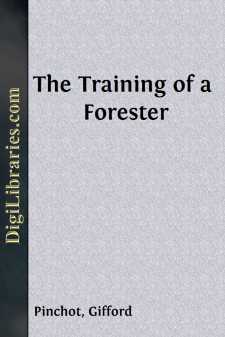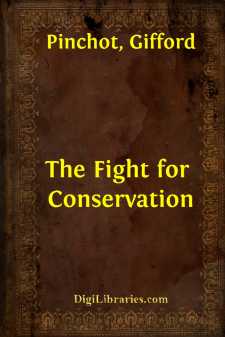Categories
- Antiques & Collectibles 13
- Architecture 36
- Art 48
- Bibles 22
- Biography & Autobiography 813
- Body, Mind & Spirit 142
- Business & Economics 28
- Children's Books 15
- Children's Fiction 12
- Computers 4
- Cooking 94
- Crafts & Hobbies 4
- Drama 346
- Education 46
- Family & Relationships 57
- Fiction 11828
- Games 19
- Gardening 17
- Health & Fitness 34
- History 1377
- House & Home 1
- Humor 147
- Juvenile Fiction 1873
- Juvenile Nonfiction 202
- Language Arts & Disciplines 88
- Law 16
- Literary Collections 686
- Literary Criticism 179
- Mathematics 13
- Medical 41
- Music 40
- Nature 179
- Non-Classifiable 1768
- Performing Arts 7
- Periodicals 1453
- Philosophy 64
- Photography 2
- Poetry 896
- Political Science 203
- Psychology 42
- Reference 154
- Religion 513
- Science 126
- Self-Help 84
- Social Science 81
- Sports & Recreation 34
- Study Aids 3
- Technology & Engineering 59
- Transportation 23
- Travel 463
- True Crime 29
The Training of a Forester
by: Gifford Pinchot
Description:
Excerpt
WHAT IS A FOREST?
First, What is forestry? Forestry is the knowledge of the forest. In particular, it is the art of handling the forest so that it will render whatever service is required of it without being impoverished or destroyed. For example, a forest may be handled so as to produce saw logs, telegraph poles, barrel hoops, firewood, tan bark, or turpentine. The main purpose of its treatment may be to prevent the washing of soil, to regulate the flow of streams, to support cattle or sheep, or it may be handled so as to supply a wide range and combination of uses. Forestry is the art of producing from the forest whatever it can yield for the service of man.
Before we can understand forestry, certain facts about the forest itself must be kept in mind. A forest is not a mere collection of individual trees, just as a city is not a mere collection of unrelated men and women, or a Nation like ours merely a certain number of independent racial groups. A forest, like a city, is a complex community with a life of its own. It has a soil and an atmosphere of its own, chemically and physically different from any other, with plants and shrubs as well as trees which are peculiar to it. It has a resident population of insects and higher animals entirely distinct from that outside. Most important of all, from the Forester's point of view, the members of the forest live in an exact and intricate system of competition and mutual assistance, of help or harm, which extends to all the inhabitants of this complicated city of trees.
The trees in a forest are all helped by mutually protecting each other against high winds, and by producing a richer and moister soil than would be possible if the trees stood singly and apart. They compete among themselves by their roots for moisture in the soil, and for light and space by the growth of their crowns in height and breadth. Perhaps the strongest weapon which trees have against each other is growth in height. In certain species intolerant of shade, the tree which is overtopped has lost the race for good. The number of young trees which destroy each other in this fierce struggle for existence is prodigious, so that often a few score per acre are all that survive to middle or old age out of many tens of thousands of seedlings which entered the race of life on approximately even terms.
Not only has a forest a character of its own, which arises from the fact that it is a community of trees, but each species of tree has peculiar characteristics and habits also. Just as in New York City, for example, the French, the Germans, the Italians, the Hungarians, and the Chinese each have quarters of their own, and in those quarters live in accordance with habits which distinguish each race from all the others, so the different species of pines and hemlocks, oaks and maples prefer and are found in certain definite types of locality, and live in accordance with definite racial habits which are as general and unfailing as the racial characteristics which distinguish, for example, the Italians from the Germans, or the Swedes from the Chinese....



